The polar bear vs tiger debate is a fascinating exploration of two of the most iconic apex predators in the animal kingdom. While the polar bear is known for its strength and adaptability to extreme cold, the tiger is celebrated for its agility, stealth, and hunting prowess.
This detailed comparison will delve into every aspect of these magnificent creatures, from their physical attributes to their conservation status. Let’s dive into the scientific details to determine which animal holds the advantage in each category.
1. Body Specifications
| Subtopics | Polar Bear (Ursus maritimus) | Tiger (Panthera tigris) | Winner |
|---|---|---|---|
| Height (at shoulder) | 1.3–1.6 meters | 0.9–1.1 meters | Polar Bear |
| Length (head to tail) | 2–2.5 meters | 2.5–3.9 meters | Tiger |
| Weight | 200–600 kg (males), 150–300 kg (females) | 90–310 kg | Polar Bear |
| Body Shape | Stocky, streamlined body with thick fur | Robust, muscular, elongated body | Tie |
| Bone Density | High bone density for strength | High bone density for strength | Tie |
| Muscle Mass | 50–60% of body weight | 60–70% of body weight | Tiger |
| Tail Length | 7–12 cm | 0.6–1.1 meters | Tiger |
| Skin/Fur Thickness | 5–10 cm (fur) | Thicker coat for varied climates | Polar Bear |
| Neck Strength | Strong neck muscles for lifting | Strong neck muscles for subduing prey | Tie |
| Overall Size | Larger and heavier | Smaller and lighter | Polar Bear |
2. Coat and Coloration
| Subtopics | Polar Bear | Tiger | Winner |
|---|---|---|---|
| Base Color | White | Orange with white underbelly | Tie |
| Pattern | Solid color | Vertical stripes for camouflage | Tiger |
| Melanin Levels | Normal melanin distribution | Normal melanin distribution | Tie |
| Coat Thickness | Thick fur | Thicker coat for varied climates | Polar Bear |
| Coat Function | Insulation in cold climates | Camouflage in forests and grasslands | Tie |
| Reflectivity | High reflectivity | Low reflectivity | Polar Bear |
| Cub Coloration | White with lighter fur | Striped from birth | Tiger |
| Seasonal Changes | Thicker fur in winter | Minimal | Polar Bear |
| Unique Markings | No unique markings | Unique stripe patterns | Tiger |
| Thermoregulation | Uses fat and fur for insulation | Uses shade and panting to cool down | Polar Bear |
3. Habitat and Range – Polar Bear vs Tiger
| Subtopics | Polar Bear | Tiger | Winner |
|---|---|---|---|
| Geographic Range | Arctic Circle (North America, Europe, Asia) | Asia (India, Siberia, Sumatra, etc.) | Tie |
| Habitat Type | Arctic tundra, sea ice | Forests, grasslands, mangroves | Tie |
| Adaptability | Highly adaptable to extreme cold | Highly adaptable to various climates | Tie |
| Climate Preference | Cold to freezing | Cold to tropical | Tie |
| Territory Size | 50–1,000 km² | 20–100 km² | Polar Bear |
| Elevation Range | Sea level to ice caps | Up to 3,000 meters | Tiger |
| Human Proximity | Can live near human settlements | Avoids human settlements | Polar Bear |
| Migration Patterns | Seasonal migrations | Non-migratory | Polar Bear |
| Endangered Habitats | Losing habitats to climate change | Losing habitats to deforestation | Tie |
| Range Overlap | Overlaps with tigers in some regions | Overlaps with polar bears in some regions | Tie |
4. Diet and Hunting
| Subtopics | Polar Bear | Tiger | Winner |
|---|---|---|---|
| Diet Type | Carnivore (seals, fish) | Carnivore (large ungulates) | Tie |
| Daily Caloric Intake | 10,000–20,000 kcal | 5,000–7,000 kcal | Polar Bear |
| Feeding Techniques | Ambush and overpower | Ambush and overpower | Tie |
| Food Consumption | 15–20 kg/day | 5–7 kg/day | Polar Bear |
| Water Consumption | 10–20 liters/day | 5–10 liters/day | Polar Bear |
| Foraging Range | 10–50 km/day | 10–50 km/day | Tie |
| Digestive System | Less efficient (50% digestion) | Efficient (70% digestion) | Tiger |
| Food Storage | Stores fat for hibernation | Caches prey | Polar Bear |
| Competition | Competes with wolves and other predators | Competes with leopards and dholes | Tie |
| Overall Diet | More varied diet | More varied diet | Tie |
5. Strength and Bite Force
| Subtopics | Polar Bear | Tiger | Winner |
|---|---|---|---|
| Bite Force (PSI) | 1,200 PSI | 1,050 PSI | Polar Bear |
| Claw Strength | Non-retractable, strong claws | Retractable, sharp claws | Tie |
| Lifting Capacity | Can lift 2x body weight | Can lift 2x body weight | Tie |
| Jaw Muscles | Stronger jaw muscles | Powerful jaw muscles | Polar Bear |
| Charging Force | Can charge at 40 km/h | Can charge at 50 km/h | Tiger |
| Limb Strength | Stronger forelimbs | Stronger forelimbs | Tie |
| Bone Crushing Ability | Can crush large bones | Can crush large bones | Tie |
| Swatting Force | Can swat with 10,000 lbs of force | Can swat with 10,000 lbs of force | Tie |
| Grip Strength | Strong grip for climbing | Strong grip for large prey | Tie |
| Overall Strength | Stronger in most aspects | Stronger in some aspects | Polar Bear |
6. Speed and Agility
| Subtopics | Polar Bear | Tiger | Winner |
|---|---|---|---|
| Top Speed | 40 km/h | 49–65 km/h | Tiger |
| Acceleration | 0–40 km/h in 6 seconds | 0–60 km/h in 4 seconds | Tiger |
| Agility in Terrain | More agile on ice and snow | More agile on flat terrain | Tie |
| Swimming Ability | Excellent swimmer | Excellent swimmer | Tie |
| Stamina | High stamina for long distances | High stamina for short bursts | Polar Bear |
| Jumping Height | Can jump 1 meter vertically | Can jump 5 meters vertically | Tiger |
| Jumping Distance | Can jump 5 meters horizontally | Can jump 9 meters horizontally | Tiger |
| Climbing Ability | Can climb ice and snow | Can climb but less agile | Polar Bear |
| Maneuverability | More maneuverable | More maneuverable | Tie |
| Overall Agility | More agile | More agile | Tie |
7. Senses – Polar Bear vs Tiger
| Subtopics | Polar Bear | Tiger | Winner |
|---|---|---|---|
| Vision Acuity | Good eyesight | Excellent night vision | Tiger |
| Hearing Range | Can hear up to 60 kHz | Can hear up to 60 kHz | Tie |
| Olfactory Capabilities | Superior sense of smell | Strong sense of smell | Polar Bear |
| Depth Perception | Good | Excellent | Tiger |
| Color Vision | Limited color vision | Limited color vision | Tie |
| Motion Detection | Highly sensitive | Highly sensitive | Tie |
| Low Light Vision | Excellent | Excellent | Tie |
| Sensory Whiskers | Highly sensitive | Highly sensitive | Tie |
| Auditory Localization | Precise | Precise | Tie |
| Overall Senses | Strong senses | Strong senses | Tie |
8. Reproduction and Lifespan
| Subtopics | Polar Bear | Tiger | Winner |
|---|---|---|---|
| Gestation Period | 6–9 months | 93–112 days | Tiger |
| Litter Size | 1–4 cubs | 2–4 cubs | Tie |
| Cub Mortality Rate | 30–40% | 30–40% | Tie |
| Sexual Maturity Age | 4–6 years | 3–4 years | Tiger |
| Lifespan (Wild) | 20–30 years | 10–15 years | Polar Bear |
| Lifespan (Captivity) | 30–40 years | 16–20 years | Polar Bear |
| Parental Care | Mother raises cubs alone | Mother raises cubs alone | Tie |
| Weaning Age | 6–8 months | 6–8 months | Tie |
| Interbirth Interval | 2–4 years | 2–3 years | Tiger |
| Reproductive Success | Higher due to adaptability | Lower due to habitat loss | Polar Bear |
9. Social Behavior – Polar Bear vs Tiger
| Subtopics | Polar Bear | Tiger | Winner |
|---|---|---|---|
| Social Structure | Solitary | Solitary | Tie |
| Territorial Range | 50–1,000 km² | 20–100 km² | Polar Bear |
| Communication Methods | Vocalizations, scent marking | Roars, growls, scent marking | Tie |
| Aggression Levels | Highly aggressive | Highly aggressive | Tie |
| Mating Behavior | Polygamous | Polygamous | Tie |
| Cub Interaction | Mother-cub bond only | Mother-cub bond only | Tie |
| Territorial Marking | Scent marking and scratching | Scent marking and roaring | Tie |
| Conflict Resolution | Physical fights | Physical fights | Tie |
| Group Hunting | Never | Never | Tie |
| Overall Sociability | Less social | Less social | Tie |
10. Conservation Status
| Subtopics | Polar Bear | Tiger | Winner |
|---|---|---|---|
| IUCN Status | Vulnerable | Endangered | Polar Bear |
| Population Trends | Declining | Declining | Tie |
| Threats | Climate change, habitat loss | Poaching, habitat loss | Tie |
| Conservation Efforts | Protected areas and anti-poaching | Strict anti-poaching laws | Tie |
| Wild Population | ~26,000 | ~3,900 | Polar Bear |
| Captive Population | ~10,000 individuals | ~7,000 individuals | Polar Bear |
| Genetic Diversity | Higher due to larger populations | Lower due to fragmented populations | Polar Bear |
| Reintroduction Success | Moderate success | Limited success | Polar Bear |
| Public Awareness | High | High | Tie |
| Future Outlook | Critical | Critical | Tie |
Conclusion – Polar Bear vs Tiger
In the polar bear vs tiger debate, each animal excels in different areas. Polar bears dominate in size, strength, and adaptability to extreme cold, while tigers showcase superior speed, agility, and hunting prowess. Both animals face significant threats due to habitat loss and human activities, making their conservation a global priority.
References
- IUCN Red List: www.iucnredlist.org
- National Geographic: www.nationalgeographic.com
- Smithsonian’s National Zoo: nationalzoo.si.edu
- Journal of Mammalogy: academic.oup.com
- Wildlife Conservation Society: www.wcs.org
By understanding the unique traits of these majestic creatures, we can better appreciate their roles in the ecosystem and work towards their preservation. Whether it’s the polar bear vs tiger, both deserve our respect and protection.
Read More – Cheetah vs Jaguar vs Leopard : A Comprehensive Comparison
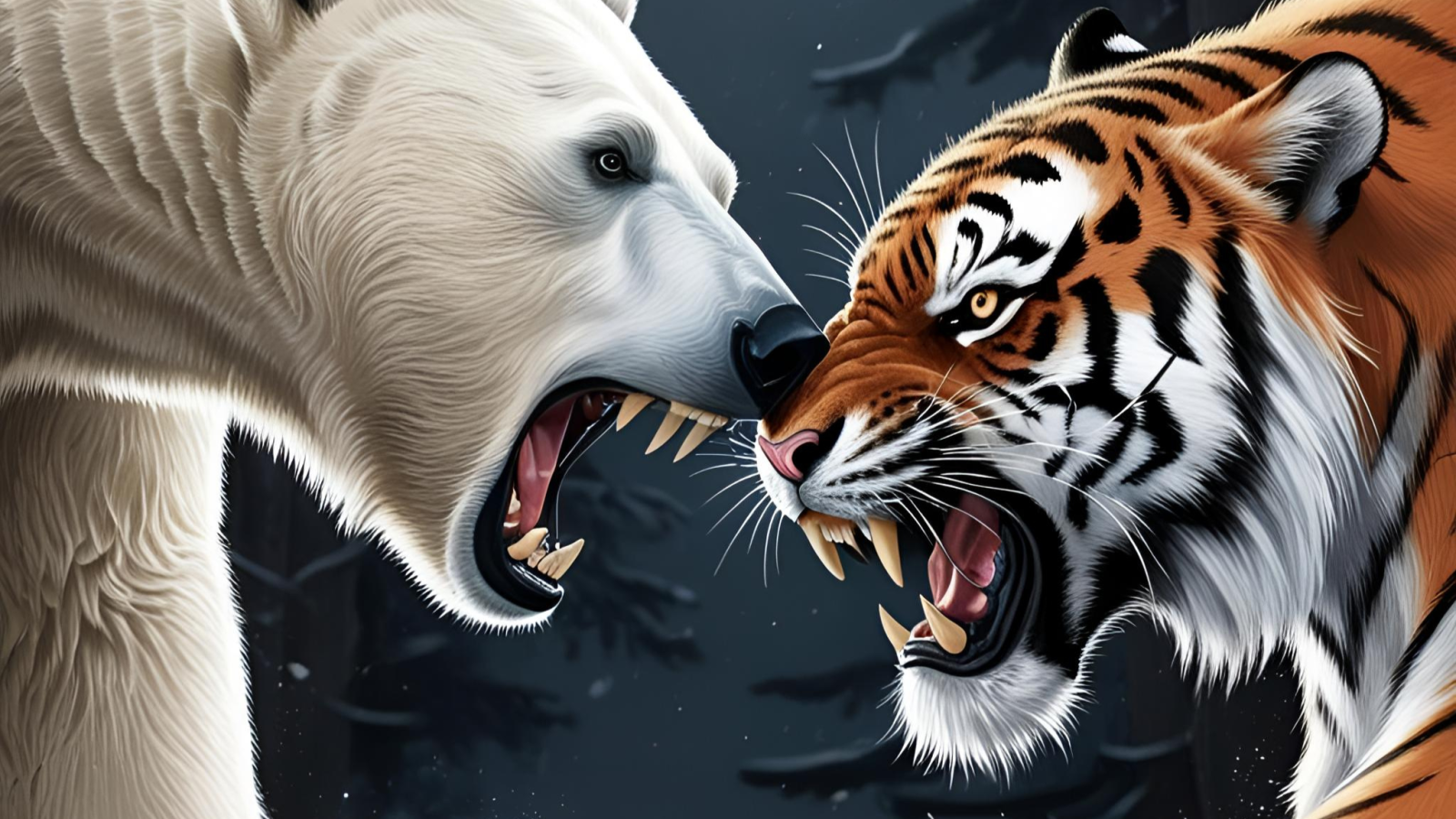
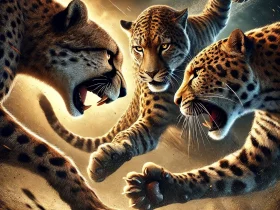
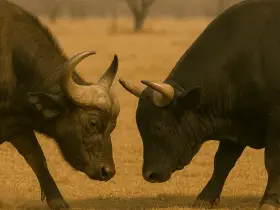
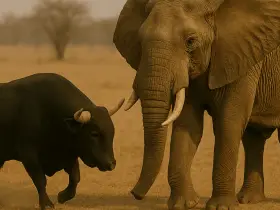

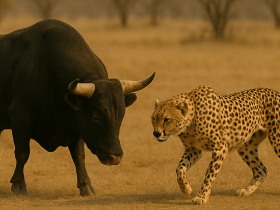
Leave a Reply